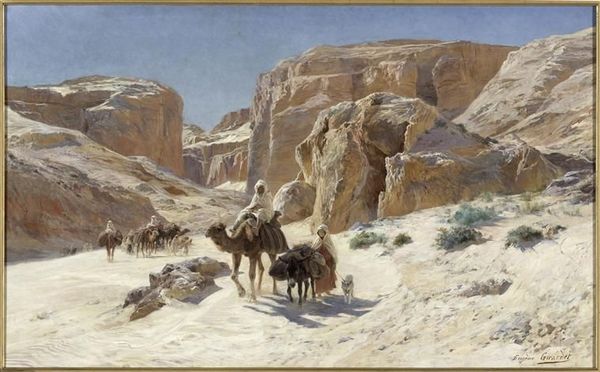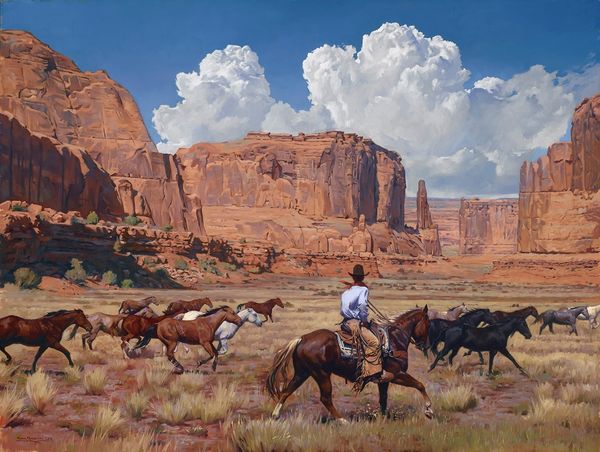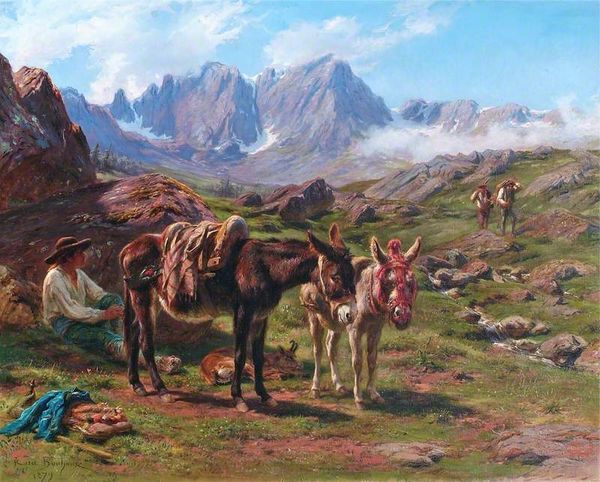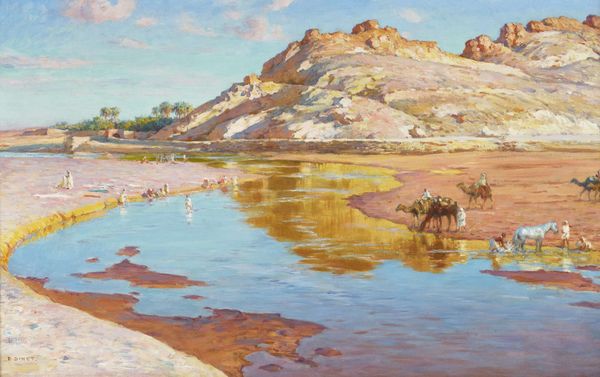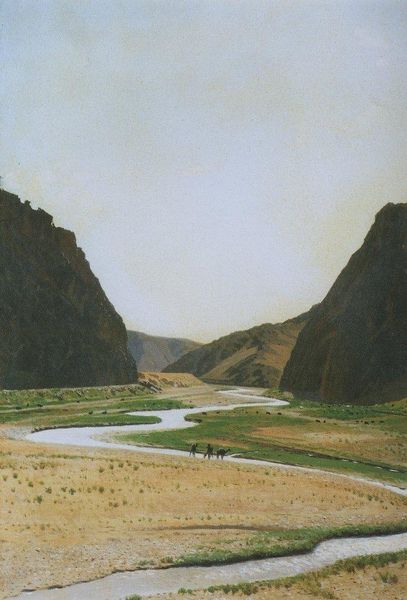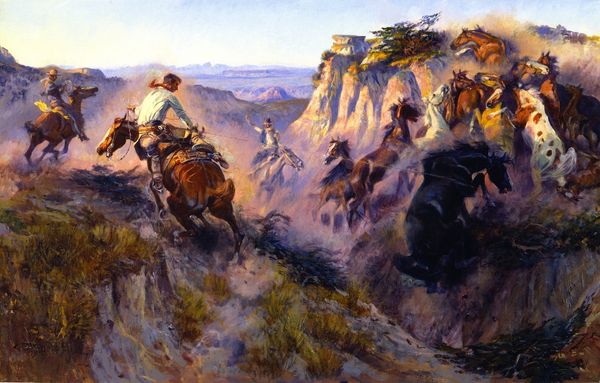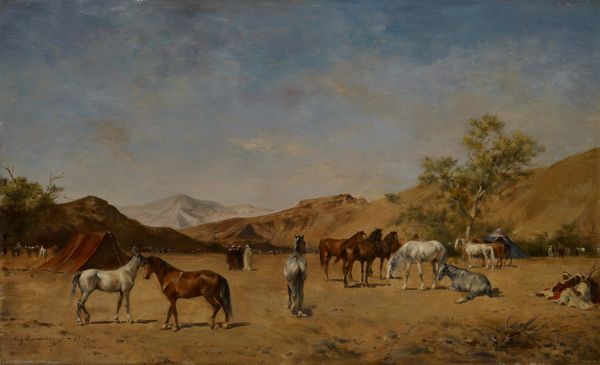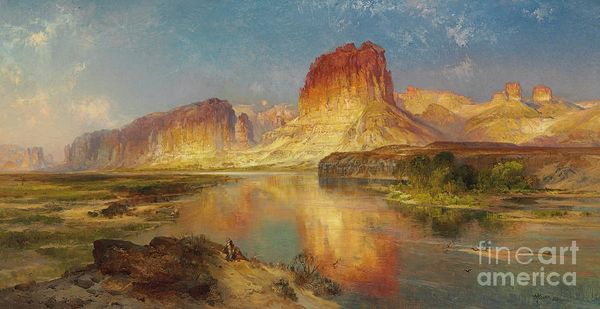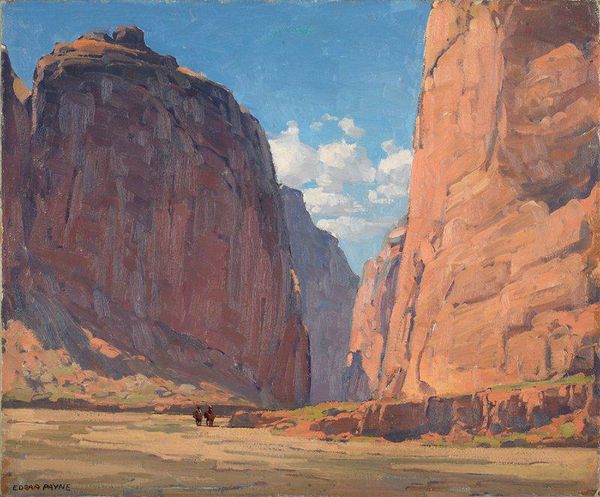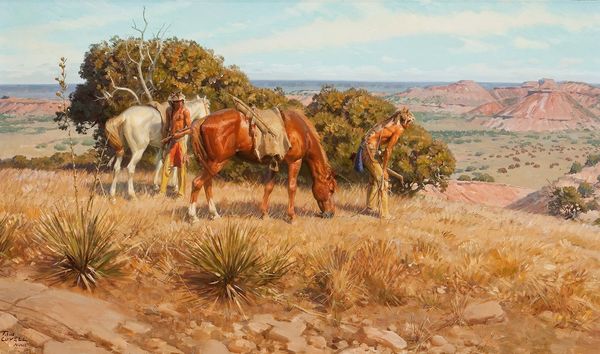
#
naturalistic theme
#
wildlife photography
#
abstract painting
#
animal
#
impressionist landscape
#
possibly oil pastel
#
nature
#
oil painting
#
naturalistic tone
#
naive art
#
expressionist
Copyright: Public domain
Curator: Here we have "La Rivière D'el-Kantara" by Maurice Bompard, an oil painting depicting a North African scene. What strikes you first? Editor: It has this serene quality, doesn’t it? The muted palette, the way the light plays on the water, creates such a peaceful atmosphere. But I also find it interesting how the rocky landscape, so typical in this region, becomes a central, even expressive, element. Curator: Yes, Bompard certainly focuses our attention on the specific geographic context. Note the two figures and the animal integrated seamlessly into the landscape as if their labor is another part of nature. The social reality of this desert community becomes palpable through their presence and engagement. How do you interpret this choice? Editor: It almost disrupts the visual harmony. The realism pulls us out of the pure aesthetic pleasure and forces us to consider their role in this environment. Notice also how the cool blues and greens of the river provide contrast to the warm oranges and reds of the stone surfaces. Curator: Right, that contrast, speaking to the harshness of the landscape and simultaneously the access to water, the material element shaping labor, and the trade in that area. Perhaps that's Bompard reflecting on the human relationship to natural resources and the daily exertion required to acquire water in that landscape. Editor: And there is something interesting about the positioning. Bompard constructs the scene in layers, like geological strata, starting with the stone riverbed, punctuated by humans and animals. It then transitions to the line of vegetation, finishing on these towering rock formations and the distant mountains. The progression creates a sense of depth and invites contemplation of each plane within. Curator: I agree. I see the composition leading the viewer towards considering water management in that region and trade's social conditions, all materialized in the lives of its residents, and ultimately distributed for consumption far beyond the El Kantara River. Editor: So ultimately you’d read the painting as an ode to the material conditions and human activity found in such settings. I'm fascinated by how its arrangement provides layers for our reading and the scene’s calmness—even its geometry. Curator: Indeed, viewing "La Rivière D'el-Kantara" has deepened my understanding of how resources like water can dictate community dynamics and modes of survival in very challenging geographies. Editor: And for me, the harmony that lies in Bompard's composition reveals much about nature, civilization, and visual language.
Comments
No comments
Be the first to comment and join the conversation on the ultimate creative platform.
